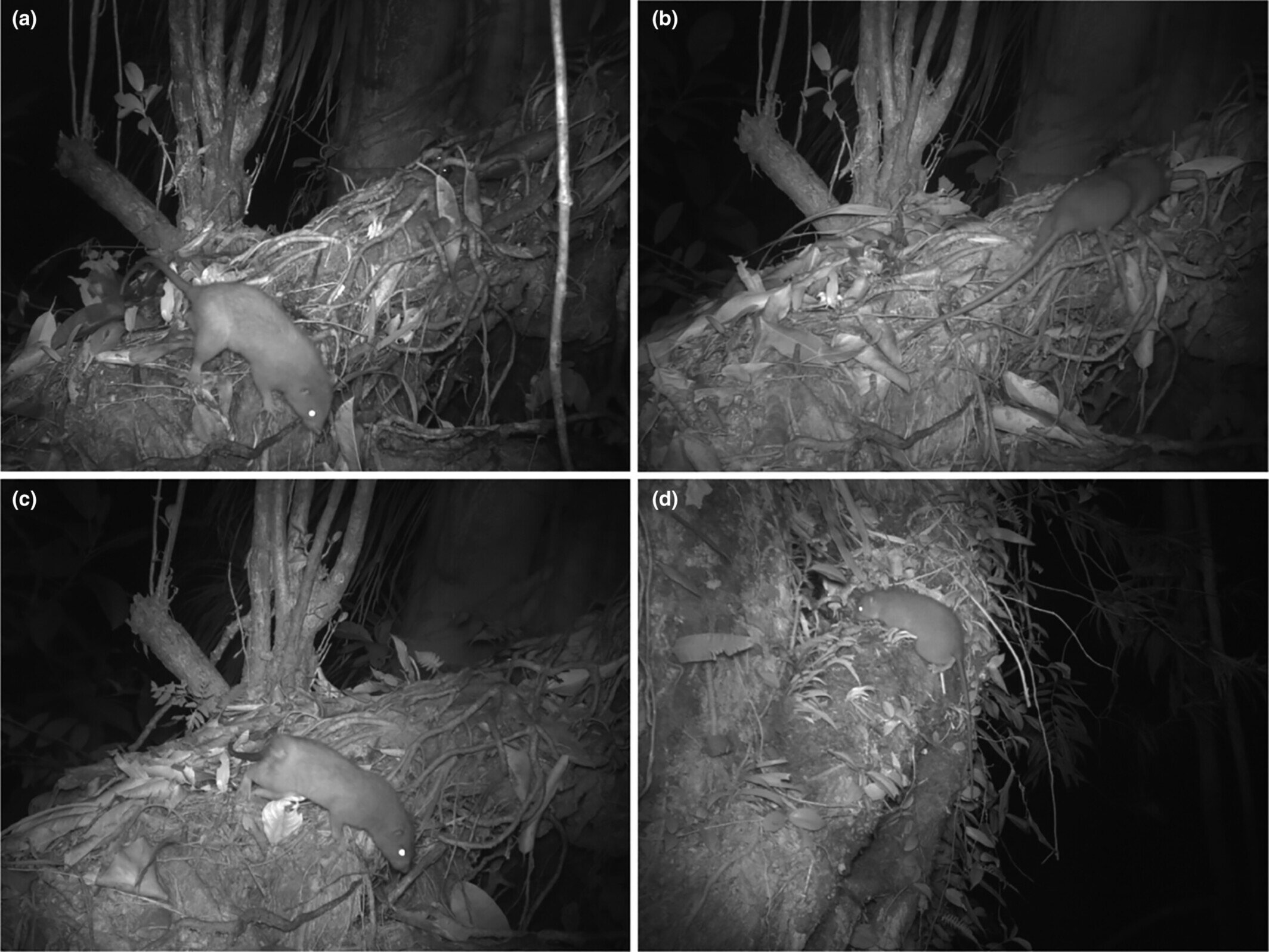A team of Zaira Rangers, a mammalogist with The University of Melbourne and a college professor with Solomon Islands National University have taken the first and only pictures of the rare Vangunu giant rat. In their project, reported in the journal Ecology and Evolution, the group set up camera traps with tips from locals and studied the images to identify the animals.
For many years, locals living in the Solomon Islands have reported stories of large rats that climb trees and crack open coconuts with their teeth. Because the rats went unstudied by scientists, it was unknown whether the rats were a unique species or even if the stories were true. In 2017, a team of researchers from the Field Museum in Chicago ventured to the islands intent on discovering the truth.
They managed to observe several of the rats and even managed to capture one and collect skin samples, which they took back to Chicago. The observations suggested that the rats likely weighed on average 1 kilogram and measured up to 45 centimeters in length—approximately three to four times the size of common brown or black rats. Upon performing a DNA analysis on the skin sample, the team found that the rat was indeed a previously unknown species—they named it Uromys vika.
The team from Chicago did not manage to capture any of the rats on film, however, which led them to create illustrations depicting the rats, which are the only images scientists have had available for study until now. For this new study, the research team set up several camera traps at sites recommended by locals on the island of Vangunu. Their experiment was a success—the team managed to capture 95 images of the rats, which, after analysis, revealed that there were four individuals.
The researchers suggest their efforts might have come just in time, as it appears the rats are likely to go extinct within a few years due to logging activities, which are destroying the only place they live.
2023-11-23 11:41:03
Link from phys.org
